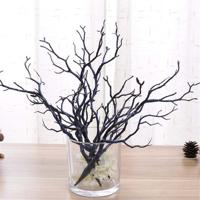5.85
3.20About Trees
An ecosystem comprises a community of living and non-living things linked together through energy flows and nutrient cycles. Energy enters the ecosystem through photosynthesis. On the other hand, through feeding on plants, animals help in conveying energy and matter through the system. Notably, decomposers release carbon into the atmosphere by breaking down dead organic matter, thus facilitating nutrient cycling. Trees are an important part of the ecosystem as they foster efficient energy flows and promote effective nutrient cycles.
Trees are perennial plants that comprise elongated trunks or stems, leaves, and supporting branches. The majority of plants under the classification of trees often have a single and self-supporting stem that contains woody tissues. In most events, the trunk produces secondary limbs, commonly known as branches. The biosphere relies on plants’ metabolism, death, and recycling. The huge stem and root systems assist in storing carbon dioxide, transporting water, and producing oxygen released in the atmosphere. The organic composition of the soil is contingent on decayed branches, leaves, and roots. These products foster the recycling of nutrients, oxygen, nitrogen, and other important ecosystem components. Though the exceptional input of trees in sustaining the ecosystem and ensuring the existence and diversity of life on earth is often underrated, most of the world’s terrestrial biomass has trees.
Things you need to know about trees
During the Carboniferous period, the earliest trees included horsetails, lycophytes, and tree ferns. The initial species were considered Wattieza fossils found in the New York State in 2007. Archaeopteris was the earliest type of tree, reproduced by spores rather than seeds. The process facilitated the association between gymnosperms such as conifers and ferns, thus introducing the Triassic era. The conifers flourish during the Mesozoic period, fostering their adaptation in diverse terrestrial habitats. The Cretaceous era saw the development of tree forms of flowering plants, which began to replace the conifers when forests began to expand. Following the first four ice ages, forests retreat as the ice advanced. In brief, the oldest fossil forest globally is the Plattekill and Gilboa formations in New York State.
Types of trees
The primary characteristic of plants is how different they are from one another. Those with similar traits have the same group into one family. In this regard, the factors of tree classification include the type of leaves, biological class, and the nature of their bark. Reflecting on the type of leaves, they can be either evergreen or deciduous plants. Deciduous species comprise those that shed leaves seasonally, and the majority are broadleaf, such as the oak tree. Deciduous species register a high rate of photosynthesis due to the leaves’ arrangement and shape. The leaves of the evergreen species remain attached throughout the year with no seasonal shedding. Based on the type of seeds, trees can be either Angiosperms and Gymnosperms. For the Angiosperms, the seeds encase in an ovary, while in the Gymnosperms, they have no flowers or fruits.
Uses of trees
The forest-based industry can have its footprints in pulp and paper manufacturing, furniture, printing, and woodworking sectors. The wood industry is responsible for producing and commerce forest products such as timber, paper, and pulp. They mature enough to produce high-quality wood products by attaining a certain diameter. However, trees removed during thinning and final harvests are often different. For instance, the banyan tree is considered one of the largest that grows up to more than 21 meters with leaves about 10-20cm. The wood obtained from plants makes different designs of furniture. At the same time, the leaves formulate medicines for varying ailments and disorders. For example, Palm oil comes from the fruit on the palm tree. The wood industry forms a dominating part of the world’s economy.
Benefits of trees
Tree planting is one of the most environment-friendly initiatives people engage in to improve the planet. They are known to offer multiple benefits for short- and long-term goals. Trees for gardens help purify the air in which they absorb pollutant gases, including ammonia and sulfur dioxide. Fig trees help regulate climate change by absorbing carbon dioxide and releasing adequate quantities of oxygen gas. Bonsai trees prevent stormwater from polluting oceans by allowing water to enter the earth and seep into the soil. Owing to their best trees for shade, they help save water by ensuring slow evaporation rates on low vegetation. To improve numeracy and literacy, kids need to have sufficient access to nature and, at the very least green views of acacia. The overwhelming scientific evidence depicts that plants are key players in the sustainability of a healthy environment.
Tips on how to buy Trees
Trees form an important part of every community. Areas such as parks, backyards, and streets are lined with them to create aesthetically pleasing surroundings. Prior to selecting your desired species of plant, it is important to determine the characteristics of a tree that fulfils your needs. Once you have adequate knowledge about the tree, assess the available varieties in the market. The following are some of the vital aspects when selecting a tree for your garden.
- Height – When considering the kind of tree to purchase, assess the place it will grow to ensure there are no possible hazards. For instance, most shade trees have a spreading canopy on top of a narrower trunk. This ensures that the view is not obstructed at the ground level. Other species have branches to the ground, which means that everything behind them will be blocked.
- Environmental tolerance – Trees have different growing requirements. In this regard, it is important to take account of the conditions your chosen plant will be subjected to.
- Care and Maintenance Requirements – Matching a tree with the conditions of your property goes a long way beyond minimizing maintenance. For instance, if your species require rich soil and high moisture content, planting it in rocky areas will necessitate the use of irrigation and fertilizers to maintain its performance.
The name tree evokes the description of an antique and powerful structure such as an oak tree and beech tree. Trees are perennial plants that encompass elongated trucks, varying leaves, and huge root systems. They have furnished the earth’s ecology with two critical life essentials namely oxygen and food. In the contemporary world, the value of trees continues to increase as more benefits of trees are discovered, and their role in satisfying the unlimited human wants to continue to expand. Overall, trees increase peoples’ quality of life by bringing natural elements and providing wildlife habitats into the urban setting.
Question & Answer
What trees grow in Dubai?
The sandy desert surrounding the city supports the growth of date palm trees. Desert hyacinths are common in the Sabkha plains, which are situated in the east of the city. On the other hand, acacia trees grow in the flat plains which are within the proximity of the Western Al Hajar mountains. The Ghaf tree, commonly known as the national tree in the UAE, is drought tolerant and superior in surviving the searing winds. Notably, indigenous species, including the palm, fir, and neem, grow prevalently in the natural parks found in Dubai. The place’s desert is known to support the growth of different types of species, such as the desert fox, striped hyena, houbara bustard, and the falcon. Though the rich varieties of native trees that are found in damper climates are scarce in the UAE, the country makes efforts in ensuring the survival of the resilient indigenous species.
Where to buy trees online in Dubai?
Our shopping platform, Shops.ae can be an excellent platform to explore and buy trees online. You will find multiple online shops and an endless products list here. All you have to do is hop on to the site and start exploring products and reading their specifications thoroughly. This is an important part of shopping. If you do not read about the product, the order that arrives might disappoint you. Thus, save yourself from the trouble of returns and reorders, and for that, you have to inspect the product. You may also read other customers’ reviews or watch online videos to validate your purchase. Do not settle for less or any second-best option. Keep searching till you find the one and we are pretty confident Shops.ae will make this possible.
How do trees protect the environment?
Though they perform diverse and complex tasks, the majority of the roles go largely unnoticed by humankind. The best species for shade improve the quality of air by absorbing, filtering, and trapping pollutants through their leaves. Moreover, they enhance the quality of water by holding it in place to impede erosion. They reduce the force of storms and minimize runoff into water reservoirs. The best trees for bonsai conserve energy by shedding their leaves in winter to expose the house to the sun, thus reducing the energy needed to warm a room. Additionally, they create a habitat for plants and animals which ensures a healthy ecosystem. Trees not only form an attractive part of the natural environment but also act as drivers of a healthier planet.
Which are the fastest growing trees?
In the contemporary world, most trees are fast-growing. Fast-growing species offer homeowners the opportunity to attain the benefits of a mature tree sooner. Specifically, people are more concerned about using fast-growing shade trees and hedges in their landscape. Hybrid poplar is one of the fastest-growing trees that add up to 5 to 8 feet per year. The plant is planted for fast shade owing to its slivery-green leaves. One may choose to plant a weeping willow that grows up to 30′ – 40′ tall. Leyland Cypress has a unique column shape and grows 3 feet per year. Paper birch is a fast-growing tree that has been known to grow at 1.5 to 2 feet per year.
Visit our shopping search engine and explore the garden products and garden plants we offer from over 500 shops!



